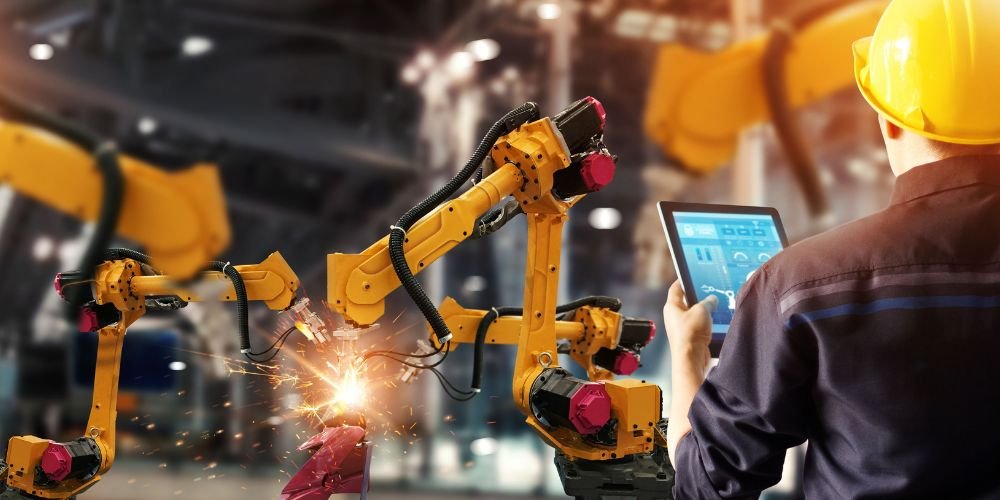Robotic systems have become integral components in various industries, revolutionizing manufacturing processes, automation tasks, and daily life. This comprehensive exploration delves into the intricacies of robotic systems, unraveling their fundamental principles, key components, recent innovations, notable applications, and the transformative impact they have on reshaping industries and advancing technological capabilities.
Understanding Robotic Systems
Robotic systems are autonomous or semi-autonomous machines designed to perform tasks with precision, accuracy, and efficiency. These systems combine mechanical components, sensors, actuators, and control algorithms to interact with the environment and execute predefined actions or commands.
Key Components of Robotic Systems
The core components of robotic systems contribute to their functionality and effectiveness in various applications:
- Manipulators are mechanical arms or limbs equipped with joints, grippers, and end-effectors that enable them to manipulate objects and perform tasks.
- Sensors: Devices that capture information about the robot’s surroundings, such as distance, orientation, temperature, and object detection.
- Actuators: Motors, pneumatic cylinders, or other mechanisms that provide motion and power to the robot’s components, allowing it to move and perform actions.
Recent Innovations in Robotic Systems
Recent innovations have propelled robotic systems to new heights, enabling the development of more advanced, versatile, and intelligent robots. Notable advancements include the adoption of collaborative robots, the integration of artificial intelligence (AI), and the use of advanced materials.
Collaborative Robots (Cobots)
Collaborative robots, also known as cobots, are designed to work alongside humans in shared workspaces. They enable safe and efficient collaboration between humans and robots in manufacturing, assembly, and other tasks.
Artificial Intelligence (AI) in Robotics
Integrating artificial intelligence (AI) technologies, such as machine learning and computer vision, enables robots to perceive, learn, and adapt to changing environments and tasks, enhancing their autonomy, flexibility, and decision-making capabilities.
Advanced Materials and Manufacturing Techniques
The use of advanced materials, such as carbon fiber, titanium alloys, and composite materials, combined with additive manufacturing techniques, enables the construction of lightweight, durable, and complex robotic structures with improved performance and capabilities.
Notable Applications of Robotic Systems
Robotic systems have diverse applications across various industries and domains, contributing to enhanced productivity, quality, and safety in manufacturing, healthcare, logistics, and other fields.
Manufacturing and Assembly
It automates repetitive tasks in manufacturing and assembly processes, such as welding, painting, and assembly, increasing efficiency, consistency, and throughput in production lines.
Healthcare and Medical Robotics
It assists surgeons in minimally invasive procedures, such as robotic surgery and telemedicine, enabling precise control, enhanced visualization, and reduced patient recovery times.
Challenges in Robotic Systems
Despite significant advancements, it faces challenges that impact its widespread adoption and effectiveness in real-world applications. Addressing these challenges is crucial for ensuring safety, reliability, and performance in robotic operations.
Safety and Human-Robot Interaction
Ensuring the safety of humans working alongside robots and designing intuitive interfaces for human-robot interaction poses challenges, requiring robust safety features, risk assessments, and ergonomic design principles to prevent accidents and injuries.
Complexity and Scalability
Managing the complexity of robotic systems and scaling them for various applications and environments presents challenges, necessitating modular designs, standardized efforts, and interoperable components to facilitate seamless integration and deployment.
Future Trends in Robotic Systems
The trajectory of robotic systems indicates exciting trends that will further redefine their capabilities and applications in automation, industry, and daily life. These trends promise to enhance intelligence, adaptability, and autonomy, ushering in a new era of robotic innovation and collaboration.
Soft Robotics and Bio-inspired Design
The emergence of soft robotics and bio-inspired design principles enables the development of robots with flexible, compliant structures and biomimetic features, allowing for safer human interactions and enhanced adaptability in unstructured environments.
Swarm Robotics and Collective Behavior
The adoption of swarm robotics and collective behavior principles enables the coordination and cooperation of multiple robots to perform tasks collaboratively, leading to scalable, resilient, and adaptive robotic systems for applications such as search and rescue, exploration, and environmental monitoring.
Conclusion
Robotic systems are transformative technologies with diverse applications and implications across various industries and domains. From manufacturing and healthcare to logistics and exploration, their impact extends far and wide, reshaping how we work, live, and interact with the world. Despite challenges, ongoing innovations in collaborative robots, artificial intelligence, and advanced materials promise a future where they continue to push the boundaries of what is possible, unlocking new opportunities for efficiency, safety, and innovation in automation and beyond.










